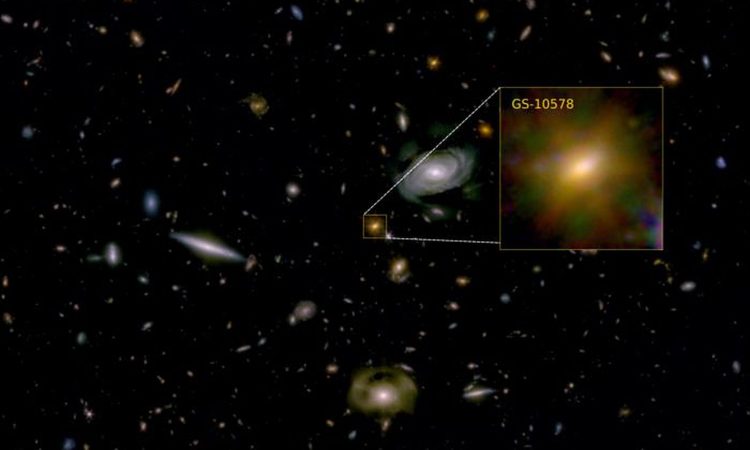
With the help of the James Webb Space Telescope, astronomers have confirmed that supermassive black holes can “starve” their host galaxies of the fuel they need to form new stars.
An international team used the Webb Telescope to observe a galaxy the size of the Milky Way in the early Universe, about 2 billion years after the Big Bang. Like many other large galaxies, the observed one has in its “heart”. However, the galaxy in the present case is essentially “dead” because it is no longer forming new stars.
“Given previous observations, we knew the galaxy was in a quiescent state: it was no longer forming many stars for its size, and we expect there to be a link between the black hole and the end of star formation. However, until Webb, we were unable to study the galaxy in detail to confirm the connection, nor did we know whether this state was temporary or permanent,” the researchers said, according to .
“The process that stopped star formation most likely happened relatively quickly”
The galaxy we’re talking about here is officially named GS-10578 but nicknamed Pablo’s Galaxy. It is so massive for such an early period of the Universe. The total mass reaches 200 billion times greater than , and most of the stars formed 12.5 – 11.5 billion years ago.
“In the early Universe, most galaxies form many stars, so it’s interesting to see a massive dead galaxy in this time period. If it had enough time to become so massive, the process that stopped star formation most likely happened relatively quickly,” the scientists said.
Webb detected the presence of a new component
With Webb’s help, the researchers learned that the galaxy is expelling large amounts of gas at speeds of up to 1,000 kilometers per second, fast enough to escape the galaxy’s gravitational pull. These fast winds are “pushed” out of the galaxy by the black hole.
Like other galaxies with black holes, the Pablo Galaxy has fast winds of hot gas, but these gas clouds have little mass and are fragile. Webb detected the presence of a new component, which could not be seen with other older telescopes. The gas is cooler, which means it is denser and does not emit light. But Webb can see these gas clouds because they block some of the light from the galaxy behind them.
A black hole that ‘kills its galaxy’
The mass of gas ejected from the galaxy is greater than the galaxy would need to continue forming stars. Essentially, the black hole is starving the galaxy to death. The team’s results were published in the journal .
“I found the culprit. and keeps it dormant by cutting off the food supply the galaxy needs to form new stars,” the researchers concluded.
Although previous theoretical models predicted that black holes can have this effect on galaxies, before the Webb Telescope it was not possible to detect this effect directly.

